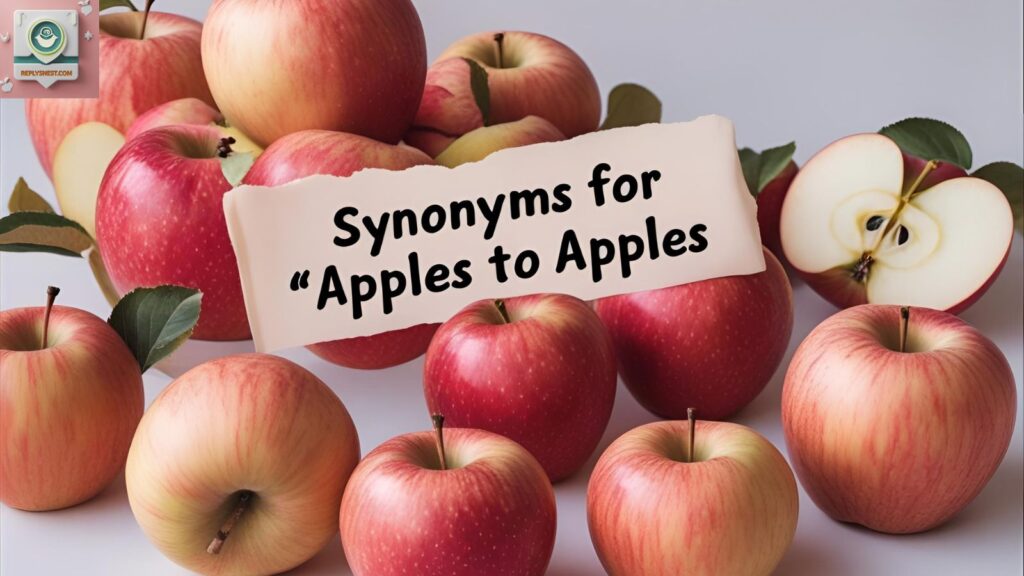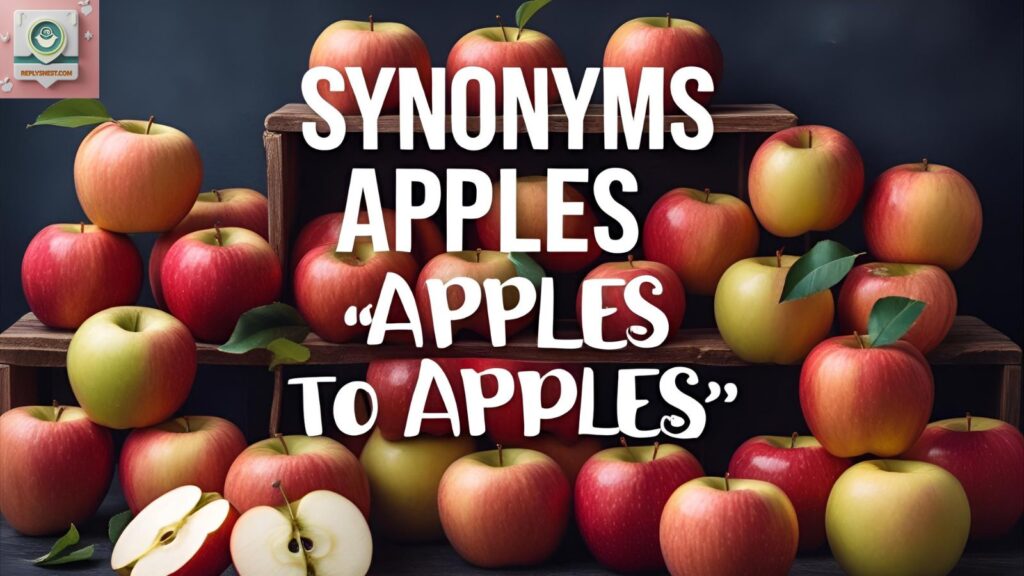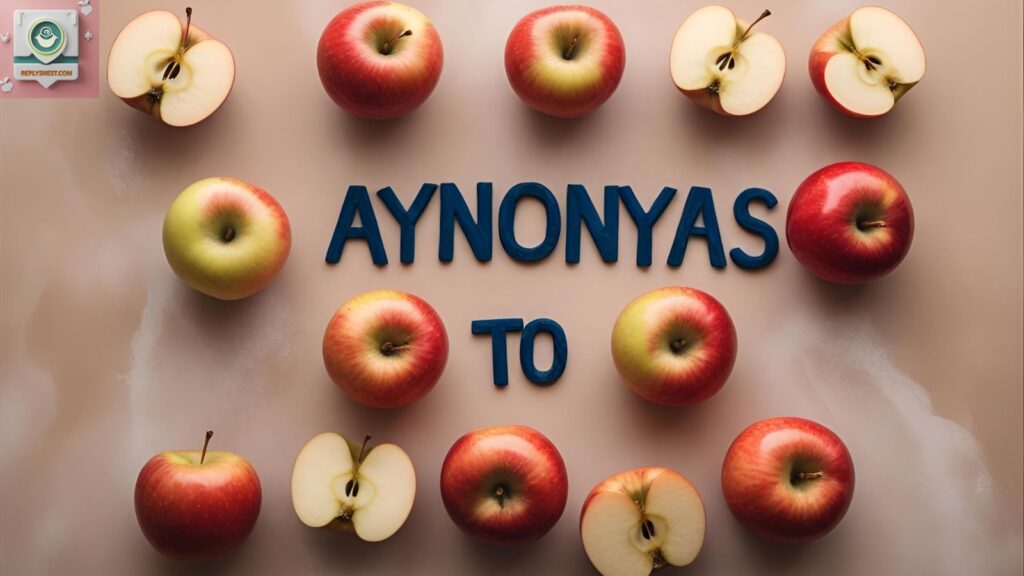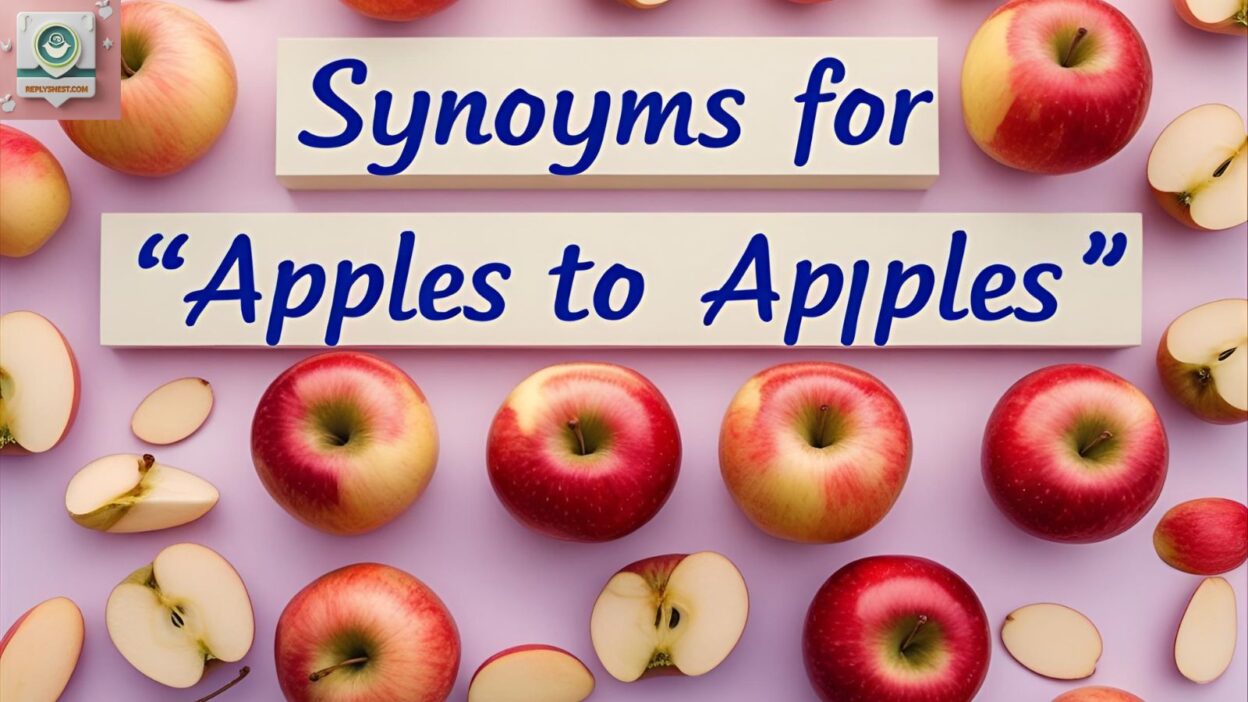When people say “apples to apples,” they’re usually talking about a fair and equal comparison one where both things being looked at have similar characteristics. It’s a helpful phrase, but it can start to feel a little overused or even impersonal in certain settings. Synonyms For “Apples to Apples”.
Below, you’ll find 25 better, warmer, and more precise ways to say “apples to apples”—phrases that keep the meaning but offer more flexibility and care in your tone.
1. Like for Like
When you want to keep things fair without sounding too formal
“Like for like” is one of the easiest and most natural alternatives. It’s practical and widely used, especially in everyday decision-making.
Best use: When comparing two products or situations with the same purpose or function
Not to use: When the items differ significantly in scope or category
Other ways to say it: Matching value, Equivalent choice
Example: Let’s do a like-for-like comparison of both service packages before we choose.
Read More: Best Responses to “Oh My Gosh” (OMG)
2. Apples with Apples

A softer spin on the original phrase
“Apples with apples” keeps the original intent while sounding just a bit more conversational and less worn-out.
Best use: Casual conversations where you still want to sound thoughtful
Not to use: When speaking in formal business or academic settings
Other ways to say it: Comparable things, Equal standards
Example: We need to make sure we’re comparing apples with apples here.
3. One-to-One Comparison

For when clarity and accuracy matter
This phrase is perfect when you’re focused on breaking things down point by point.
Best use: Data-driven environments or side-by-side product evaluations
Not to use: In informal or storytelling conversations
Other ways to say it: Exact match, Clear comparison
Example: The one-to-one comparison of both reports shows the gaps clearly.
4. Side-by-Side

An easy visual metaphor that keeps things human
“Side-by-side” helps bring people along in a conversation without sounding too technical.
Best use: Presentations or any setting where visuals or choices are being discussed
Not to use: When comparing complex emotions or values
Other ways to say it: Next to each other, Lined up together
Example: We’ll review the designs side by side to see which one fits the project best.
5. Level Playing Field
When fairness is just as important as the outcome
This phrase is deeply rooted in the idea of equality and transparency.
Best use: Conversations about fairness, especially in policy or hiring
Not to use: When comparing products or numbers
Other ways to say it: Equal opportunity, Balanced ground
Example: We need a level playing field before we start evaluating performance.
6. True Comparison
A simple way to say you’re being honest and fair
“True comparison” signals a thoughtful and measured approach.
Best use: When wanting to express honesty in assessments
Not to use: In lighthearted, informal conversations
Other ways to say it: Honest contrast, Real comparison
Example: Without consistent data, we can’t make a true comparison.
7. Equal Basis
Clear and neutral, but still respectful
This is a solid phrase to use in any context that requires fairness and attention to detail.
Best use: Legal, HR, or administrative conversations
Not to use: Creative writing or emotional discussions
Other ways to say it: Same level, Equal ground
Example: Let’s assess both proposals on an equal basis.
8. Equal Terms
Respectful and careful with language
This phrase works especially well when discussing people or situations where fairness matters most.
Best use: Team dynamics, hiring, interpersonal discussions
Not to use: Comparing objects or abstract ideas
Other ways to say it: Fair footing, Same expectations
Example: They negotiated on equal terms, which made the process smoother.
9. Matching Criteria
For when you want to highlight consistency
This is a helpful phrase when you’re making decisions based on specific standards.
Best use: Academic, business, or product evaluations
Not to use: Personal reflections or emotional conversations
Other ways to say it: Same requirements, Equal conditions
Example: The two candidates were evaluated using matching criteria.
10. Comparative Context
Thoughtful and measured, great for layered discussions
Use this when you want to be clear that you’re making a fair and informed comparison.
Best use: Academic writing, presentations, complex arguments
Not to use: Informal conversations or everyday speech
Other ways to say it: Same framework, Shared context
Example: We can only evaluate this fairly with a proper comparative context.
11. Equal Comparison
Clear, kind, and to the point
This one works across a range of situations and is both easy to understand and respectful.
Best use: Conversations where fairness is key
Not to use: When exaggeration or humor is part of the tone
Other ways to say it: Balanced view, Fair approach
Example: It’s not an equal comparison if one side has more resources.
12. Direct Comparison
For when you’re laying things out with clarity
Use this when you’re putting two things side by side without any distractions.
Best use: Product testing, employee reviews, performance evaluations
Not to use: When subtlety or emotional nuance is needed
Other ways to say it: Straight match, Objective view
Example: The direct comparison makes it clear which one delivers more value.
13. Even Comparison
Soft, respectful, and easy to follow
Use this when you’re trying to be fair without sounding rigid.
Best use: Group discussions, coaching, team feedback
Not to use: Analytical or data-heavy writing
Other ways to say it: Level review, Balanced take
Example: We can’t have an even comparison unless both had the same starting point.
14. Same Standards
When quality and fairness go hand in hand
This phrase is useful when you want to show consistency in expectations.
Best use: Grading, evaluations, or hiring
Not to use: Abstract or personal comparisons
Other ways to say it: Consistent expectations, Shared benchmarks
Example: Let’s make sure we’re using the same standards across the board.
15. Aligned Comparison
Thoughtful and grounded in logic
This phrase suggests that you’ve made the effort to ensure both sides are being viewed fairly.
Best use: Business decisions, product reviews, contracts
Not to use: When keeping the tone very casual or light
Other ways to say it: Synced review, Coordinated evaluation
Example: It’s not an aligned comparison if the goals are totally different.
16. Fair Comparison
Timeless and easy to trust
“Fair comparison” is one of the most human ways to say you’re being careful and considerate.
Best use: Feedback, team discussions, performance talks
Not to use: When making humorous or exaggerated contrasts
Other ways to say it: Honest match, Balanced assessment
Example: We can’t make a fair comparison if one person had extra help.
17. Equivalent Evaluation
Formal but still thoughtful
This is best used when the context is structured, but you still want to show you care about accuracy.
Best use: Financial or academic settings
Not to use: Emotional or creative discussions
Other ways to say it: Like-for-like review, Consistent measure
Example: The equivalent evaluation helped clarify which option had better long-term value.
18. Balanced Comparison
Gentle, honest, and respectful
This phrase helps keep the tone neutral and non-confrontational, even in tough conversations.
Best use: Personal feedback, evaluations, or peer reviews
Not to use: Competitive environments that require a clear winner
Other ways to say it: Equal perspective, Level assessment
Example: Let’s make a balanced comparison so no one feels overlooked.
19. Comparable Basis
Measured, mature, and logical
This term works well when explaining your reasoning behind a conclusion.
Best use: Presentations, education, and research
Not to use: Informal conversations
Other ways to say it: Similar foundation, Shared level
Example: Both candidates were judged on a comparable basis.
20. Equitable Frame
Rooted in fairness and social awareness
This phrase emphasizes not just equality, but justice and fairness, especially in human-centered contexts.
Best use: HR, DEI work, community planning
Not to use: Comparing objects or technical tools
Other ways to say it: Fair lens, Just perspective
Example: Only through an equitable frame can we properly understand both outcomes.
21. Matched Elements
Detail-oriented and clear
Great for precise comparisons where all parts line up equally.
Best use: Technical writing, engineering, structured analysis
Not to use: Personal or abstract comparisons
Other ways to say it: Identical parts, Same structure
Example: We need matched elements before making a decision.
22. Head-to-Head
Lively but still grounded
Use this when comparing two clear contenders in a way that feels energetic but fair.
Best use: Product reviews, competitions, campaigns
Not to use: Sensitive topics or interpersonal comparisons
Other ways to say it: Face-off, Direct showdown
Example: These two phones go head-to-head on features and price.
23. Even Footing
Empathetic and equality-focused
This is perfect when you’re talking about people and want to highlight fairness.
Best use: Interviews, hiring, or fairness discussions
Not to use: Object-based or abstract comparisons
Other ways to say it: Equal chance, Same level
Example: They both deserve to be judged on even footing.
24. Straight Comparison
Clear and free of bias
This is a helpful way to say you’re simply showing what’s there, without spin.
Best use: Writing reviews, comparing options
Not to use: Storytelling or persuasive writing
Other ways to say it: Plain contrast, Direct view
Example: The straight comparison highlights the pros and cons clearly.
25. Clear Contrast
When you want clarity without bias
Use this when you’re trying to help someone see the difference without pushing an agenda.
Best use: Analysis, coaching, honest feedback
Not to use: In contexts requiring subtlety or nuance
Other ways to say it: Obvious distinction, Honest look
Example: There’s a clear contrast in how each team approached the challenge.
Conclusion:
Replacing “apples to apples” with a more specific or thoughtful phrase doesn’t just improve your writing it helps you connect better with others. Whether you’re offering feedback, evaluating choices, or explaining your reasoning, the language you use can create clarity and compassion.
In my own writing and work, I’ve seen how much tone and word choice can change the way people respond. The right phrase can lower defensiveness, invite collaboration, and lead to better outcomes for everyone involved.
So the next time you find yourself saying “apples to apples,” try something that reflects the full picture. Not just what’s being compared but how it’s being shared.



